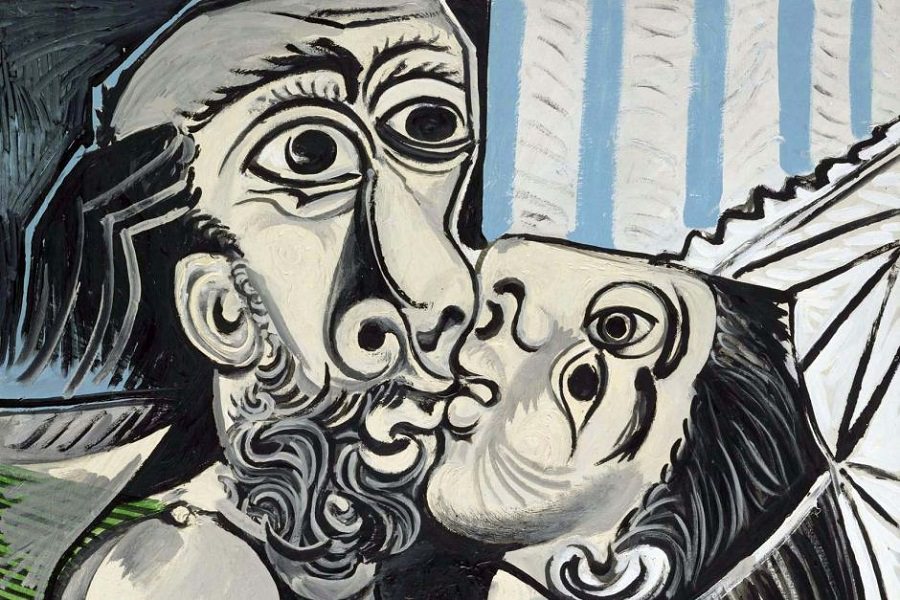The Kiss, 1969 by Pablo Picasso
The theme of the couple, omnipresent throughout Picasso's career, became virtually an obsession toward the end of his life.
The realism of the tender or violent scenes of kissing couples, usually portrayed without a decor, shows how much importance sexual love had for the artist. Unlike the erotic scene of The Kiss by
Gustav Klimt, Picasso's This Kiss from 1969 only shows two heads joined by a single line occupying the entire pictorial space. Picasso does not hesitate to deform the faces in order to bring them closer
together: "Of the two, he makes but one, to express the intimate fusion that takes place during the act of kissing." The noses mold themselves into a mutual contour; the mouths bite each other; the woman's eyes, both of which are visible even though
she is shown in profile, have moved up her forehead, which is tilted back.
The realism of the tender or violent scenes of kissing couples, usually portrayed without a decor, shows how much importance sexual love had for the artist. This Kiss from 1969 shows two heads joined by a single line occupying the entire pictorial space. Picasso does not hesitate to deform the faces in order to bring them closer together: "Of the two, he makes but one, to express the intimate fusion that takes place during the act of kissing." The noses mould themselves into a mutual contour; the mouths bite each other; the woman's eyes, both of which are visible even though she is shown in profile, have moved up her forehead, which is tilted back.
All the paintings of this period that represent couples illustrate the same fusion of two beings. The man is old and balding, and has a long beard; his eyes are wide open, as if he were having a revelation; he is bigger than the woman and seems gentle and protective. Gone is the erotic frenzy of the sexual act in former years; expressed here is the tenderness and serenity of Picasso's years with Jacqueline. Subsequently, the theme of the couple was to take on a more pathetic aspect.





















